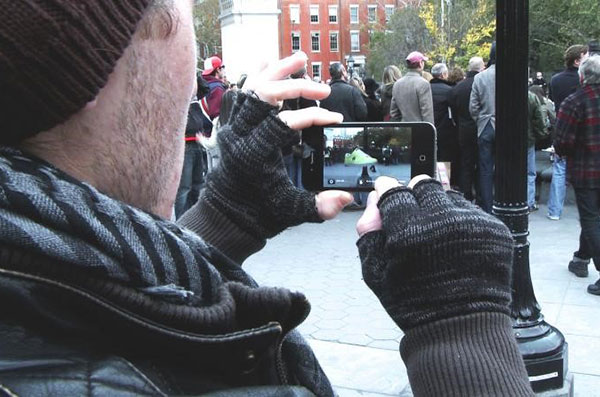If we think about it, there is a fundamental disconnect between the digital data that is accessible to us and the real physical world, where we need to apply that data. While we can feel and experience the world surrounding us, the data that drives our decisions in the real world are still on papers and digital devices. This lack of real-time synchronization between the physical and digital world creates a black hole in which all of the precious data from connected devices have no value.
Augmented Reality (AR) is a technology that promises to fill this gap by superimposing the digital data and images on the physical world. It can act as a way to connect data with the real world objects and surroundings.
Augmented Reality in Retail Sector
Rather than clicking pictures with the glittery bunny filter on Snapchat, consumers might want to use the Augmented Reality tech to make their lives easier. Wouldn’t it be great, if instead of filters, they could use AR to try on a pair of sunglasses and see if they look right on them?
According to a MarketsandMarkets report, “Augmented Reality in Retail Market is expected to grow from USD 1,155.8 million in 2018 to USD 7,951.2 million by 2023, at a CAGR of 47.1% between 2018 and 2023.”
This makes it clear that augmented reality will have a huge impact on the retail sector, may it be online or in-store. Some of the leading brands have experimented with augmented reality and have received a tremendous response from the customers in terms of engagement.
Let’s explore how retailers can make use of augmented reality in different areas of their business.
1) Marketing with Smart Storefront Displays
Besides using the traditional ways of advertising and branding, retailers can make use of augmented reality to make their storefronts interactive in order to attract customers and increase footfall. Smart storefront displays can create hype amongst customers and make a powerful statement on behalf of the brands. If done right, the AR displays will grab the attention of the passersby and improve brand reputation by delivering a unique experience. It will attract potential customers by letting them explore the products that the brand has to offer, even before they actually enter the store.

2) Smart Mirrors and Virtual Fitting Rooms
AR-powered mirrors can be used in retail stores to let customers try on products such as apparels and cosmetics without actually putting them on. Virtual trial rooms are on-trend for fashion retailers and are supposed to make it easier for customers to “try and buy”. Smart mirrors can show how a particular product will look in different colors and patterns, thereby eliminating the hassle of trying multiple pieces.
3) Product Interaction for Online Stores
Online retailers often face issues when the lack of interaction with the physical product becomes the sole reason for not making the purchase online. In such cases, augmented reality can prove to be a great technology that will allow the shoppers to have a closer look at the product and try them on before making the purchase; all of that without having to leave the comfort of their home. With just a webcam and a high-speed internet connection, customer shopping experience can be made convenient and interactive.

4) Invisible Pop-up Stores
The way customers explore and gain information about products has changed significantly with the introduction of augmented reality. Invisible pop-up stores are a perfect example. Invisible pop-up stores are created by adding digital information to a specific location in the physical world. For instance, the park near a customer’s house can be converted to a grocery store; they can enter the park and use their smartphone to scan through the aisles of the grocery store, which will be overlaid on the park area. (Remember PokémonGo? Imagine something of that sort. Of course, the customers won’t have to keep looking for the product as they would with Pokémons!)
Anyone can use his/her smartphone to go grocery shopping at the park and once you are done with the ordering, you can go back to enjoying your time at the park. Shoppers can add products to the cart and get them delivered to their home while having a fun shopping experience. Such pop-up stores build using augmented reality can work wonders for retailers in raising brand awareness.

5) Blending AR into the product
Retailers can also extend the implementation of AR from shopping experience to the product experience by integrating AR into the actual product. Brands can incorporate the products with some features that can be accessed by the buyer using AR. A good example: Adidas launched a line of sneakers that unlocked an AR game when scanned. The players would then use the sneaker as a controller to move forward in the game.
Plenty of retailers have integrated the augmented reality technology into their online and in-store experience, which is definitely a smart move, considering:

eInfochips has worked with some leading retail brands and has delivered comprehensive connected retail solutions from the storefront to the back office. When it comes to enhancing customer experience, augmented reality is certainly the key differentiator that can make your brand stand out. Get in touch with our team to get a better idea about how augmented reality can be used in the retail sector.













